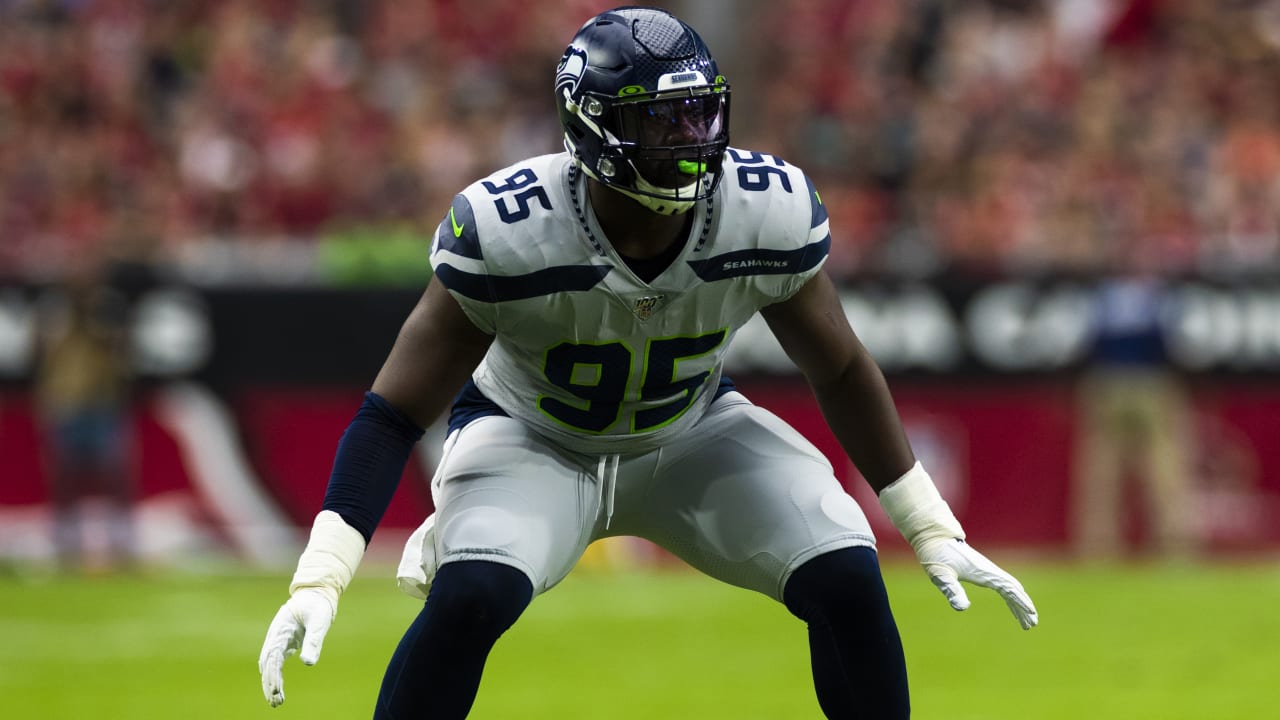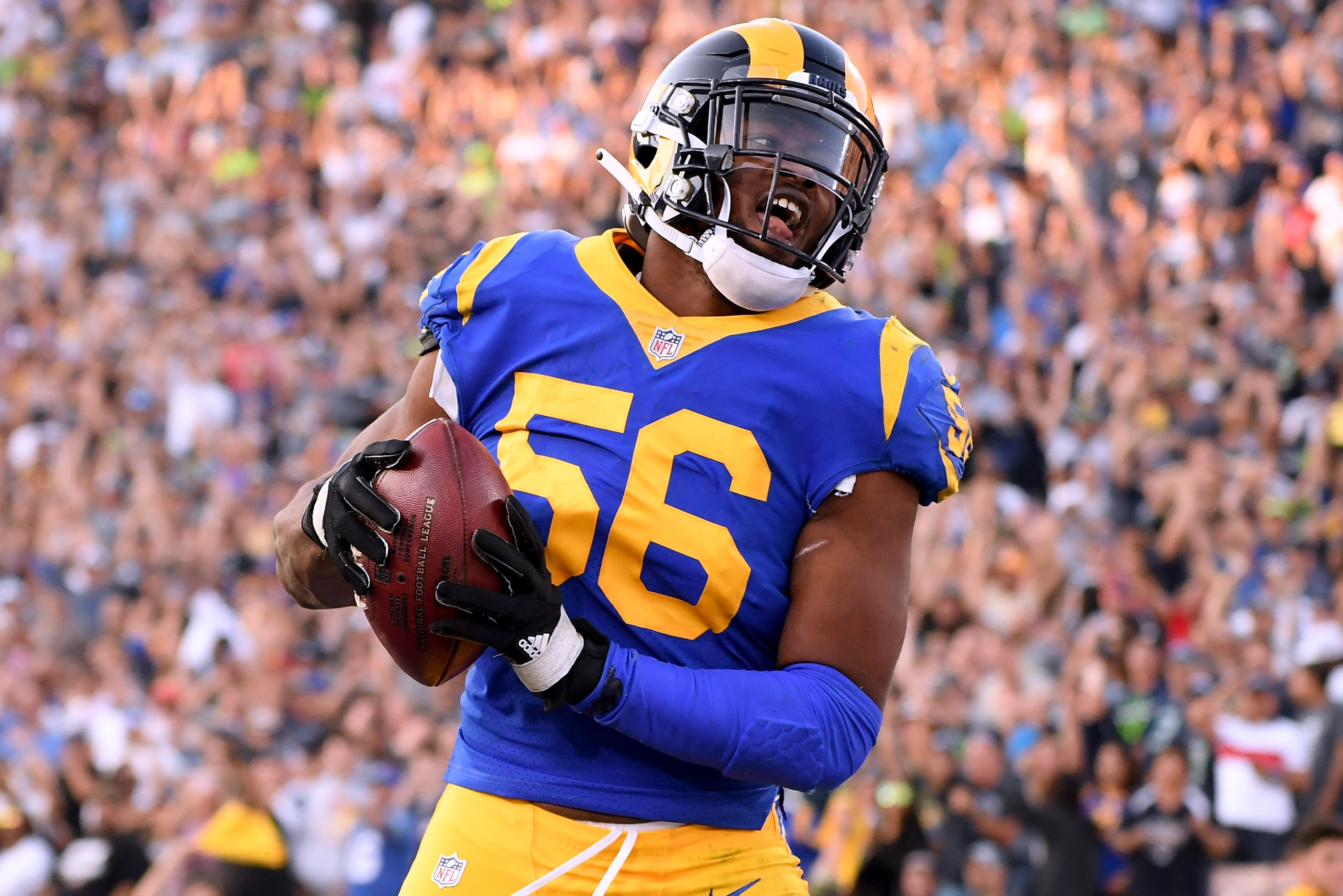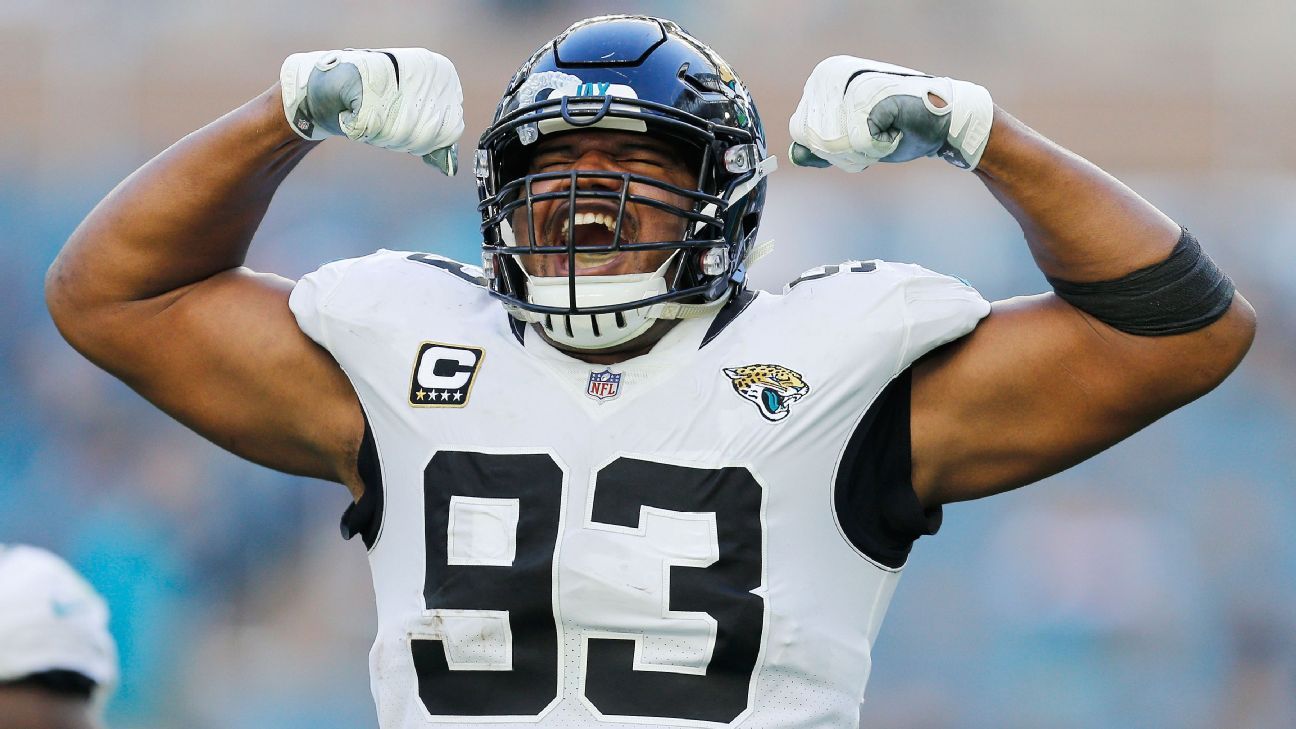
The Seahawks need more from L.J. Collier in 2020
A lot of people are still holding out hope the Seahawks can make another pass rush signing before training camp. But how likely is it?
The answer is — not very likely.
With Carlos Hyde’s $2.75m cap hit now on the books, Spotrac has Seattle at $13,810,312 in cap space. Over the cap projects $13,985,255.
Most of it is already accounted for in terms of the rookie class, injured reserve and other bits and pieces. That takes up about $8m.
Realistically the Seahawks have between $5-6m to spend. They still have to replace Al Woods. It would be staggering if they went into next season with only Jarran Reed, Poona Ford, Bryan Mone and Demarcus Christmas at defensive tackle. A signing will be made and it might take up most of the remaining cap room.
For those hoping they still have the flexibility to sign Jadeveon Clowney or Everson Griffen — they don’t. There’s only one semi-realistic scenario where I can see it (and I’ll come back to that later).
They’ve used nearly $60m on additions and retentions this year. They’ll go beyond $60m when they sign a defensive tackle.
The Seahawks have chipped away and chipped away. Now, their roster is pretty much set. This is what we have to judge their off-season by.
It’s often suggested that the Seahawks can cut players to create extra room. This is technically true — but it’s highly questionable whether it’s likely.
Take K.J. Wright for example. Had the Seahawks decided to part ways at the start of the off-season, they would’ve saved $7.5m in cap space. Due to the terms in his contract, they would now only save $6.5m.
You might suggest it’s only a million dollars’ difference. Yet surely if you were going to part with Wright this off-season, you’d do it when it was most financially beneficial? Wright’s sizeable $10m cap hit wasn’t hidden in the shadows.
Furthermore, it’d be quite the thing to do to a player who has given so much to the Seahawks. Cutting him now would severely limit his ability to latch on somewhere else. It’d likely go down poorly with key players on the roster, such as Bobby Wagner. It’s just not the type of thing this franchise does.
If they were going to move on from Wright, it would’ve happened (at the latest) the day after the draft when they cut Justin Britt and D.J. Fluker.
They are prepared to retain Wright and are destined to use $25m of their 2020 cap space on two linebackers, to go along with the first round pick they used on Jordyn Brooks.
The Seahawks can trim their roster in other ways to free up room. Again though, it doesn’t seem very likely.
If Clowney or Griffen were signed, the obvious thing to do would be to cut Branden Jackson and save $2.1m. Yet it’s only $2.1m. It’s not a significant enough amount to make a move realistic.
People have touted the idea of parting with several of the players they’ve already retained — such as Jacob Hollister, David Moore, Joey Hunt and Luke Willson.
They’re not going to cut Hunt and lose a valued backup center. The more likely cut would be Ethan Pocic, saving $1m. Hunt has been somewhat reliable, they trust him and Pocic has not shown anything in three years.
Clearly the Seahawks value Hollister, otherwise they wouldn’t have given him the second round tender and secured his services for an eye watering $3.259m. They could’ve given him the original round tender, which was cheaper, and still retained the ability to match any offer he received. They didn’t — they basically hung a ‘hands off’ sign around his neck.
Rather than see him as a likely sacrifice this summer, I think it’s more likely that they simply value what he offers. He’s a different kind of target to the other tight ends on the roster. Whether he has upside or not — there was some chemistry with Russell Wilson in 2019 and he made some significant plays. Enough, it seems, to want to give him a second year in the offense.
At the very least he seems destined to be with the team in camp. If the other TE’s charge ahead and he struggles in the competition, all bets are off. But at this stage he’s much more likely to be a featured aspect of the offense than trade or cut fodder.
Someone like David Moore would be more expendable if they re-sign Josh Gordon. However, the overall saving wouldn’t be much even if Gordon agrees to a veteran minimum deal. Luke Willson’s contract is only $887,500.
I don’t think it’s likely any of these players will be shifted to create room.
There’s only really one scenario where they can fit in a Clowney or Griffen.
Firstly, it would mean cutting Branden Jackson and using his $2.1m salary on a defensive tackle. Is someone like Snacks Harrison or Brandon Mebane willing to play for as little as $2.1m? That’s questionable.
It would leave about $5-6m to spend on a pass rusher. Either Clowney or Griffen would then need to be willing to play for that sum of money or they’d have to be willing to sign a multi-year deal with a low year-one cap hit.
That’s basically the only realistic scenario — short of hacking away at the depth they’ve invested so much in this off-season.
On Clowney — it’s possible you can get him on a three or four year agreement with a cap hit as low as $6m in year one. Frank Clark’s cap hit last year was $6.5m after all, despite his massive new contract in Kansas City. It’d mean the Seahawks committing big money to Clowney down the line though — which we already know they’re unwilling to do.
For Griffen — he turns 33 in December. A long term contract seems unlikely unless it’s heavily weighted in favour of the team. It’s unclear what his market is. He might be willing to play for as little as $5m, depending on what other interest he’s receiving.
This could’ve been a very different off-season. I still believe that the Seahawks thought they’d be able to find some common ground with Clowney earlier in the process and get a deal done. My guess is once he determined he was being undervalued and set up the stalemate that remains in place, they were somewhat caught off-guard.
I don’t think they really had a Plan B of any great substance. I don’t think they invested much time in negotiating with the Robert Quinn’s and Dante Fowler’s. I think Jarran Reed and Clowney were the early priorities, plus some O-line reinforcements, and then you let the rest of free agency come to you.
Instead they were left waiting for Clowney. Which they did. They waited. But with no end in sight they’ve been forced to fill their remaining holes, chipping away.
Some will blame Clowney. Some will blame the team for not simply moving on earlier and signing other players. Either way, there simply isn’t the money available to add another pass rusher barring a dramatic turn of events.
If that’s the case, they’re relying on Benson Mayowa, Bruce Irvin, L.J. Collier, Rasheem Green, Jarran Reed and two rookies to try and turn one of the NFL’s worst pass rush units into a non-liability.
You can now support Seahawks Draft Blog via Patreon by clicking the tab below.











